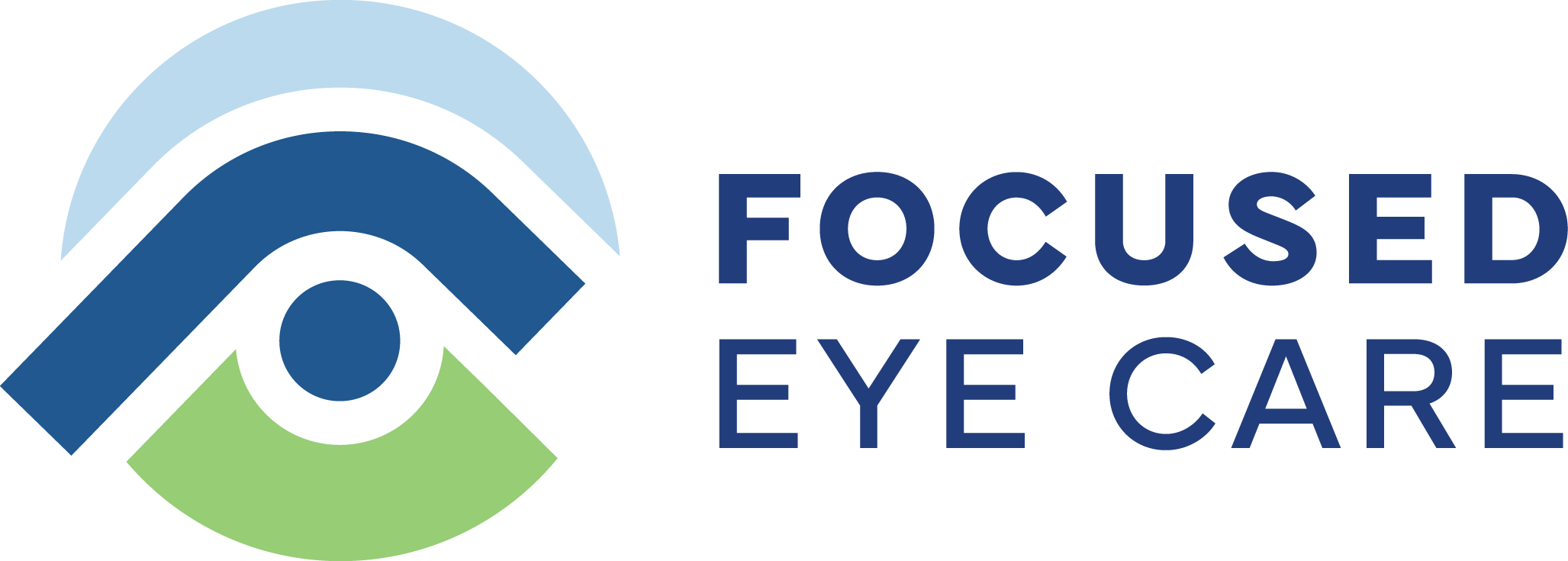Nashua Office: 603-882-0311 Milford Office: 603-673-1330 Call or Text
Common Eye Conditions and Diseases that Affect Your Eyesight
For your convenience, here are descriptions of eye conditions and diseases for which we commonly provide diagnosis and treatment at Focused Eye Care, in Nashua.
Many eye conditions and diseases can affect your eyesight and/or have long-term consequences if not treated properly and promptly. If you think you or someone in your family has one of these conditions or diseases, please contact Focused Eye Care to schedule an exam and get more in-depth information.
Anterior Uveitis
Anterior uveitis is an inflammation of the middle layer of the eye, which includes the iris (colored part of the eye) and adjacent tissue, known as the ciliary body. If untreated, it can cause permanent damage and loss of vision from the development of glaucoma, cataract or retinal edema.
Signs and symptoms may include a red, sore and inflamed eye, blurring of vision, sensitivity to light, and a small pupil. Because the symptoms of anterior uveitis are similar to those of other eye diseases, your Focused Eye Care doctor will carefully examine the inside of your eye, under bright light and high magnification, to determine the presence and severity of the condition. Other diagnostic tests may also be performed.
Treatment usually includes prescription eye drops, in combination with anti-inflammatory drugs. Treatment takes several days, or up to several weeks in some cases.
Blepharitis
Blepharitis is a general term for an inflammation of the eyelid and eyelashes. It is among the most common and stubborn eye conditions usually resulting from poor eyelid hygiene, a low-grade bacterial infection (usually staphylococcal), an allergic reaction and/or abnormalities in oil gland function.
Like some other skin conditions, blepharitis can be controlled but not cured. The main goals in treating it are to reduce the amount of bacteria along the lid margin and open plugged glands. Contact Focused Eye Care to assess the severity of your problem and the best treatment method.
Cataracts
A cataract is a clouding of the eye’s normally clear lens, which leads to a progressive blurring or dimming of vision. It is the world’s leading cause of blindness and among the most common conditions related to aging – by age 65, you have a 50 percent chance of developing a cataract, and, by age 75, it jumps to 70 percent.
A cataract starts out small and initially has little or no effect on vision. As the cataract progresses, it becomes harder to read and perform other normal tasks. In the early stages, your doctor may recommend stronger eyeglasses and adjusting your lighting to reduce glare. When cataracts disrupt your daily life, your doctor may recommend cataract-removal surgery, which is one of the most frequent and successful procedures done in the U.S.
Color Blindness / Deficiency
Color vision deficiency means that your ability to distinguish some colors and shades is less than normal. About eight percent of men and one percent of women are color deficient.
Red-green deficiency is the most common form, and results in the inability to distinguish certain shades of red and green. A less common type affects blue and yellow; and in very rare cases, color deficiency exists to an extent that no colors can be detected, only shades of black, white and grey.
Color deficiency is usually inherited and cannot be cured, but those affected can often be taught to adapt. Your Focused Eye Care provider can help!
Conjunctivitis (Pink Eye)
Conjunctivitis, also known as pink eye, is an infection or inflammation of the conjunctiva – the thin, protective membrane that covers the surface of the eyeball and inner surface of the eyelids. Caused by bacteria, viruses, allergens and other irritants like smoke and dust, pink eye is highly contagious and is usually accompanied by redness in the white of the eye and increased tearing and/or discharge.
While many minor cases improve within two weeks, some can develop into serious corneal inflammation and threaten sight. If you suspect conjunctivitis, visit your eye care provider at Focused Eye Care for an examination and treatment.
Diabetic Eye Disease
Diabetic eye disease is a general term for a group of eye problems that can result from having type 1 or type 2 diabetes, including diabetic retinopathy, cataracts and glaucoma.
Often there are no symptoms in the early stages of diabetic eye disease, so it is important that you don’t wait for symptoms to appear before having a comprehensive eye exam. Early detection and treatment of diabetic eye disease will dramatically reduce your chances of sustaining permanent vision loss.
Digital Eye Strain (Computer Vision Syndrome)
Digital Eye Strain aka Computer Vision Syndrome – we updated the name now that computer screens, televisions, tablets and smartphones all contribute to this condition – is characterized by neck pain, blurry vision, stiff shoulders, headache and watery eyes.
The symptoms are typically due to a failure to blink, eye muscle coordination, poorly corrected vision, and blue light emanating from screens. And because screens can be anywhere from a foot or less to eight feet or more away, regular glasses may not be the best option for handling everything your eyes are forced to focus on.
Your Focused Eye Care doctor will happily talk to you about your digital viewing habits, and help you find a corrective lens solution to provide relief.
Dry Eye
Dry eye syndrome refers to a breakdown in the quantity or quality of tears to moisten, cleanse and protect the eyes. This is significant because, with each blink, tears protect the surface of the eye, washing away dust and microorganisms. When this protective coating dries up, the eyes may feel “gritty” or burn and can be more sensitive to light. In extreme cases, vision can be blurred.
If you suspect that you have dry eye, see your eye doctor. Proper care will not only increase your comfort – it will protect your eyes. Your eye care provider can perform a series of tests to determine if you have dry eyes.
Glaucoma
Often called “the silent thief of sight,” glaucoma is an increase in the intraocular pressure of the eyes, which causes damage to the optic nerve with no signs or symptoms in the early stages of the disease. If left untreated, glaucoma can lead to a decrease in peripheral vision and eventually blindness.
While there is no cure for glaucoma, there are medications and surgery available that can help halt further vision loss. Early detection and regular eye exams are vital to slowing the progress of the disease.
Lazy Eye (Amblyopia)
Lazy eye, medically known as amblyopia, is a loss or lack of development of vision, usually in one eye. This degenerative process usually begins with an inherited condition and appears during infancy or early childhood. Lazy eye needs to be diagnosed between birth and early school age since it is during this period that the brain “chooses” its visual pathway and may ignore the weaker eye permanently.
Lazy eye is not always easy to recognize since a child with worse vision in one eye does not necessarily have lazy eye. Because of this, it is recommended that all children, including those with no symptoms, have a comprehensive eye examination by the age of three and sooner if there is a family history of any eye condition or disease. If you suspect a problem, or need to set up your child’s first eye examination, contact Focused Eye Care to set up an appointment.
Macular Degeneration
Macular degeneration is a chronic, progressive disease that gradually destroys sharp central vision due to a deterioration of the macula, a tiny spot in the central portion of your retina comprised of millions of light-sensing cells. Because it is so commonly associated with aging, it is also known as age-related macular degeneration (AMD). There are two forms of AMD called “dry,” most common and with no known treatment, and “wet,” less common and treated with laser procedures. Genetic testing is now available to help identify those most likely to develop “wet” macular degeneration.
In most cases, reversing damage caused by AMD is not possible, but supplements, protection from sunlight, eating a balanced diet and quitting smoking can reduce the risk and progression of macular degeneration. For suggestions, speak with your eye care provider at Focused Eye Care.
Ocular Hypertension
Ocular hypertension is an increase in the pressure in your eyes that is above the range considered normal. The term is used to distinguish people with elevated pressure from those with glaucoma. There are no noticeable signs or symptoms, so during regular eye exams, your Focused Eye Care doctor checks the pressure in your eyes with an instrument called a tonometer.
Ocular hypertension can occur in people of all ages, but it occurs more frequently in African Americans, those over age 40, and those with family histories of it and/or glaucoma. It is also more common in those who are very nearsighted or who have diabetes.
Spots / Floaters
Spots aka floaters are small, semi-transparent or cloudy particles within the vitreous – the clear, jelly-like fluid that fills the inside of your eyes. They appear as specks of various shapes and sizes, threadlike strands or cobwebs. Because they are within your eyes, they move as your eyes move and seem to dart away when you try to look at them directly.
Spots are often caused by small particles of protein or other matter trapped during the formation of your eyes before birth. They can also result from deterioration of the vitreous fluid due to aging; or from certain eye diseases or injuries.
Most spots are not harmful and rarely limit vision, but they can be indications of more serious problems, and you should see your Focused Eye Care optometrist if you notice sudden changes or see increases in them.
Strabismus
Cross-eyed, medically known as strabismus, refers to a condition in which eyes are misaligned. It commonly occurs when the muscles that control eye movement are not properly working together. The result is one or both eyes turning inward, outward, upward or downward, or one or both eyes moving irregularly.
Strabismus is usually diagnosed during childhood and affects about 4 percent of children, afflicting boys and girls equally. Though it cannot be prevented, its complications can be avoided with early intervention. Even if you notice symptoms intermittently – when your child is ill, stressed or fatigued – alert your eye care provider.
Focused Eye Care has the experience and equipment necessary to diagnose and often treat the eye conditions detailed above at our offices in Nashua and Milford. For more information please request an appointment with your eye care provider, and we will be in touch with you shortly.

